#the mobile gaming bit is because i can completely see brian as those type of ppl to go “UYMMM MOBILE GAMING ISNT GAMING” to
Explore tagged Tumblr posts
Text


sharing is caring or however it goes.
#clemart#toontown corporate clash#ttcc#macthinker#<- like 50/50#mac opsys#brian ttcc#prethinker#the mobile gaming bit is because i can completely see brian as those type of ppl to go “UYMMM MOBILE GAMING ISNT GAMING” to#every single person who even mentions it. and then on his phone he has like 1500 of those “99% cant beat this level” ragebait ad apps#he doesnt even like them he just has to prove a point#and he cant let any of his coworkers know because they would tear him limb from limbs for months. hed never live it down#anyways. that hoodie will get damaged in some way shape or form and one of them will die. horrifically#macs forcefully closing the hoodie part not realizing that brians stupid dome head is going to mess it up#drew these inbetween and out-of classes so theyre like slop but whateerv#coloring macs jacket/hoodie as anything other than green made me realize how well the green actually is.. it felt criminal to color it#anything else. but that wont stop me#ok closing my eyes as i hit post. i share for orb nation
43 notes
·
View notes
Text
Top 30 Films of 2018
I’m actually getting one of these out at a fairly reasonable time! I’m a champion.
Compared to last year, I would say 2018 had fewer films that I really loved, that shook me and immediately registered as important - but also, more films that have grown on me over time, that were clever and inventive in ways that convince me to look past their shortcomings (or reevaluate if they are shortcomings at all). Plenty of odd, perhaps imperfect movies made it far up the list, and I think I ended up privileging that weird streak more than usual this year. But hopefully that makes for interesting reading here.
I found making this list that a couple of the big arthousey hits of the year (Eighth Grade, Burning, The Rider, and others) ended up slipping into the basement of the top 50. Keep an eye out for a rejoinder post following this in a couple days where I hash out my thoughts on those. For now, top 30 after the jump:
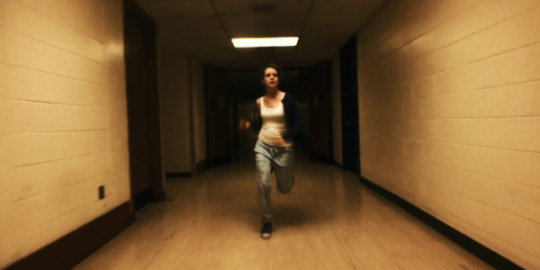
30. Unsane dir. Steven Soderbergh
Remember when Tangerine came out and everyone was like, “wow I can’t believe this was shot on an iPhone” and it was a whole thing? Well, I can believe that Unsane was shot on an iPhone, and that’s really for the better. Ever the innovator, Soderbergh follows Sean Baker’s lead by taking full advantage of the logistical advantages and distinctive appearances of iPhone-shot footage, putting together a film that uses its hardware not as a flashy obstacle to be overcome but as a driver of its look and feel, proving at least for now that mobile-shot films are viable (though we’ll see how his next one turns out). The film itself is good too - Claire Foy gives a wonderfully prickly performance, and the claustrophobic visuals make for a great psychological thriller.
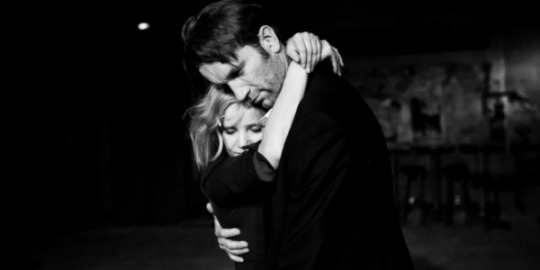
29. Cold War dir. Paweł Pawlikowski
Expanding on the aesthetic territory he explored with Ida, Pawlikowski brings another black & white, Polish-language period piece about identities split between different (religious, political) worlds. Cold War is the more complicated and perhaps less focused film, but also the more alluring one, with a luscious love story, incredible music (Łojojoj...), and great, showy performances from Joanna Kulig and Tomasz Kot. In other words, it’s luxurious, romantic Euro-arthouse fare. Probably best watched with a full glass of wine in hand.
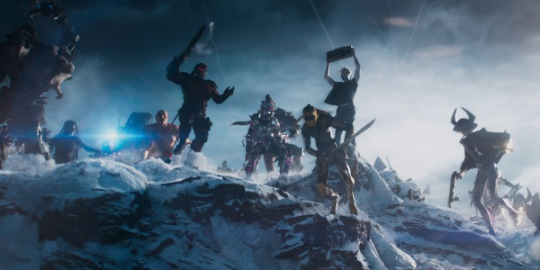
28. Ready Player One dir. Steven Spielberg
A film that many accused of “pandering” to audiences for its many blink-and-you’ll-miss-it nods to 80s nostalgia and gaming culture, Ready Player One was on the contrary seemingly uninterested in anything of the sort. It managed to accomplish something more meaningful by packing the film so dense with nerd-bait that it becomes just texture and noise - Tracer popping up in the background of random scenes ends up being less of Overwatch reference and more of a piece of plausible set dressing in a VR social media hub. This contributed to RPO being not only a technically impressive but a visually overwhelming effects film, packaged around a seemingly knowing 80s blockbuster pastiche (the story, the character types, even the music cues were too old-fashioned to be on purpose). A film both smarter and easier to like than the discourse around it suggested.
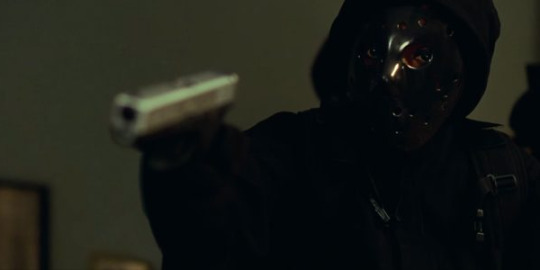
27. Widows dir. Steve McQueen
I do really wish that McQueen would go back to making demanding, brutal films like Hunger, but if he simply has to become a commercial filmmaker I guess I don’t mind this. Surely the ensemble film of the year, with the entire cast firing on all cylinders - Daniel Kaluuya as the sadistic enforcer/campaign manager in particular impresses, though naturally Viola Davis, Elizabeth Debicki, Cynthia Erivo, and even Colin Farrell make for compelling characters in this twisty, nervy heist film. The action scenes are all impressively mounted (if a bit few and far between) and there are enough McQueen-esque florishes to keep things interesting in the interim (that long car scene!). Great moody popcorn stuff.
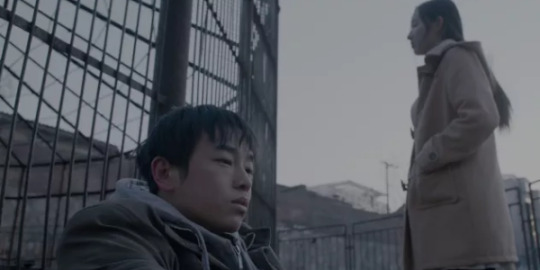
26. An Elephant Sitting Still dir. Hu Bo
Elephant has gotten a lot of press for two reasons: its nearly four-hour length and its director’s untimely death shortly after its completion. The length is important because it beats you into submission, forcing you to accept its rhythm and smothering you in tight focus on its main characters until you feel like it’s your own POV (I wasn’t really into it until, uh, the two hour mark, but then somehow I was hooked). Hu Bo’s death is important because knowing that, the sensation of being trapped, pressured, and disoriented by the Current State of China (ever the popular subject matter) feels all the more palpable and, maybe unfortunately, grants the film some extra layer of authority, or at least urgency. If I ever have the time or energy, I would love to revisit this film - I expect it will one day be seen as a landmark.

25. Make Me Up dir. Rachel Maclean
A bizarre little bit of sugary pop-feminist techno-dystopia, pulling off a sort of cinematic cousin to vaporwave by way of Eve Ensler. What unfolds is pretty insane, involving dance numbers, incomprehensible lectures on dodgy gender politics, and sets that look pulled out from a cheap children’s TV show. It’s definitely a marmite film - how well you connect with this will depend heavily on your tolerance for clearly-fake CG, well-trodden feminist talking points, and pastels - but for those with the appetite for this brand of political kitsch then this is just about the best version of itself imaginable.
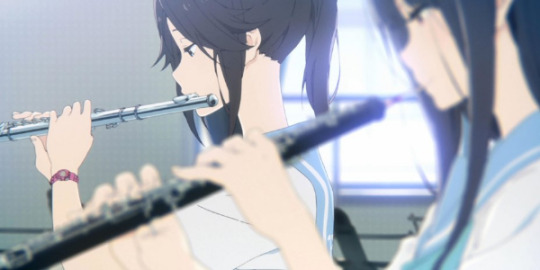
24. Liz and the Blue Bird dir. Naoko Yamada
Naoko Yamada out Naoko Yamada-s herself. A standalone spinoff of Hibike! Euphonium that focuses on members of the secondary cast, Liz makes good on the sensitive, subtly-executed love story that the show ultimately failed to produce (not quite Adolescence of Utena-tier course correction, but we’ll take it). This is a film propelled by the tiniest gestures - a hand tensing behind the back, a nervous flicker of the eye, a cheerful bounce in the step - in that way animation can provide that seems not incidental but hugely, blatantly filled with meaning. While A Silent Voice was a great breakthrough for Yamada as an “original” feature, it’s Liz that feels like the more mature film, and a promising indicator for what lies ahead.
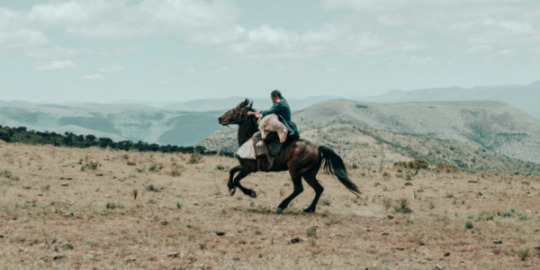
23. Sew the Winter to My Skin dir. Jahmil X.T. Qubeka
Maybe the most surprising film of the year is this, an action-biopic about John Kepe, a South African Robin Hood figure, that almost entirely eschews spoken dialogue in favor of visual storytelling, physical acting, and clever audio design. But this is not some pretentious, austere arthouse film substituting gimmicks for actual character; Sew the Winter to My Skin is an engaging, fascinating, and unexpectedly accessible historical epic, prioritizing mythic bigness over simple recitation of fact. While it demands some patience at first (with no dialogue, it takes a bit for the film to properly introduce its cast), it quickly shows itself to be an inventive, exciting, and occasionally funny adventure that proves Qubeka as a truly exciting voice in South African cinema.
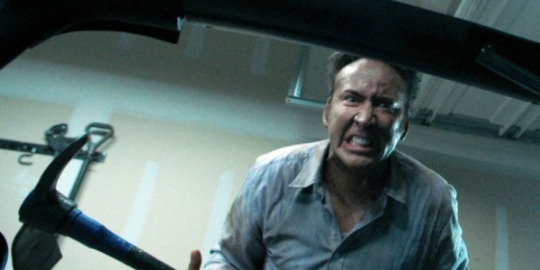
22. Mom and Dad dir. Brian Taylor
Forget Mandy, THIS is the crazy Nic Cage movie of the year. A slick, rapid-fire horror comedy that feels almost like a music video at points, Mom and Dad has what’s surely Cage’s best unhinged performance in years as well as a great, more restrained turn by Selma Blair. The violence is ludicrous, the premise is nutty, and the sense of humor is utterly sick - that the film manages to squeeze out a surprisingly coherent commentary on suburban family life on top of this is a minor miracle (a scene where Cage destroys a pool table proves strangely thoughtful). For all the broadly acclaimed “serious” horror films in recent years, like this year’s kind of boring Hereditary, groan-filled A Quiet Place, and mostly incoherent Suspiria, I more appreciate this breed of deranged, funny, and tightly focused effort. It doesn’t need to be that deep.
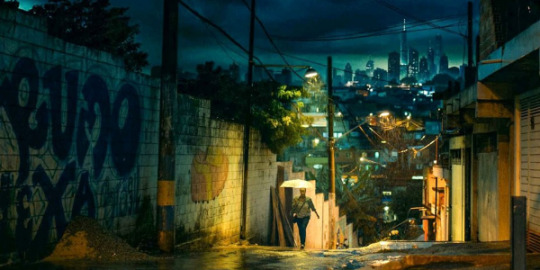
21. Good Manners dir. Marco Dutra, Juliana Rojas
I’m going to mark this write-up with a **spoiler warning**, as I think it’s basically impossible to talk about this film without giving the game away. Good Manners has one of the best genre switcheroos in recent years, starting off as a proper Brazilian class drama (think Kleber Mendonça Filho) with a lesbian twist before explosively transforming into a horror movie that reveals a hidden monster-coming-of-age story that’s nearly unrecognizable as the same film from an hour before. As delightful as this bit of narrative sleight of hand is, it can’t justify a good film alone, which is where the great lead performance by Isabél Zuaa and the mesermizing, inventive matte paintings of the São Paulo skyline come into play, making this fantastical, genre-bending film a true original of the year.
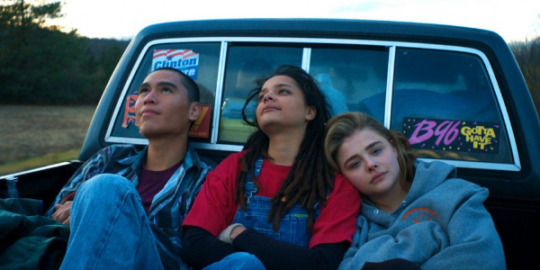
20. The Miseducation of Cameron Post dir. Desiree Akhavan
There’s a tendency in the queer teen film genre to sometimes drift towards miserablist portrayals of growing up; to emphasize the hardship, nonunderstanding, and isolation to the expense of other experiences. Cameron Post manages to avoid this path even as it explores the dreadful premise of life in a conversion camp by balancing the solidarity, humor, and defiant joy hidden along the edges of the camp experience with the cruel, dehumanizing nature of the place. The film works, then, not only as a statement against conversion therapy and the real harm it does to all participants, but also as a lively, triumphant teen movie that feels more powerful than the lazy, doom-and-gloom approach.

19. Minding the Gap dir. Bing Liu
Few films capture the particular small city Midwest atmosphere quite like this one, a very raw documentary that feels very much like the first feature it is - but in a good way. Cut together from years of Liu’s amateur footage as well as new material of its subjects (the director and two of his old friends), a documentary that at first seems to be about the local skateboarding culture stretches out to many other topics: domestic violence, race relations, middle-American economic anxiety. The film, perhaps because of its closeness to the director and his relative inexperience, manages to take on a quick-moving scattershot approach, weaving stream-of-consciousness from one topic to the next, while still giving each the time and weight it deserves.
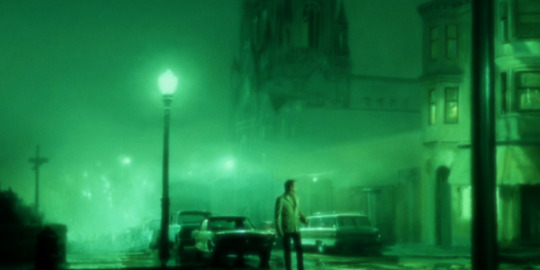
18. The Green Fog dir. Evan Johnson, Galen Johnson, Guy Maddin
A hard film to sum up, though at its heart not a terribly complicated one. Ostensibly a very loose reconstruction of Vertigo using clips from other material shot in San Francisco, from The Conversation to San Andreas to Murder, She Wrote, this new, uh, thing from Maddin and the Johnsons is a short, sweet, and really quite funny collage less interested in slavishly reenacting its inspiration than making funny jokes with movie clips. Some highlights include Rock Hudson carefully watching an *NSYNC music video on a tiny screen, a long sequence admiring Chuck Norris’ face that doesn’t seem to match any particular part of Vertigo, and a number of scenes of dialogue with all the speech cut out, leaving only awkward pauses and mouth noises. It’s high art!
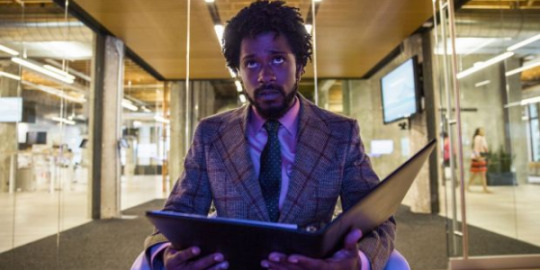
17. Sorry to Bother You dir. Boots Riley
Boots Riley’s transition from long-standing underrated rapper to breakout auteur has been wild to witness. Sorry to Bother You is certainly one of 2018′s most original and distinctive films (what other film is it like, exactly?), and any complaints about unsubtle politics or overpacked narrative can be easily counterbalanced with the film’s sheer verve and oddball energy. Like Widows, it’s another of the great ensemble pieces of the year - Lakeith Stanfield and Tess Thompson are great as usual, and of the supporting cast Armie Hammer emerges as the standout with an incredibly funny halfway-villainous turn, plus a great bit of voice casting with David Cross. Leading candidate for this year’s Film of the Moment.
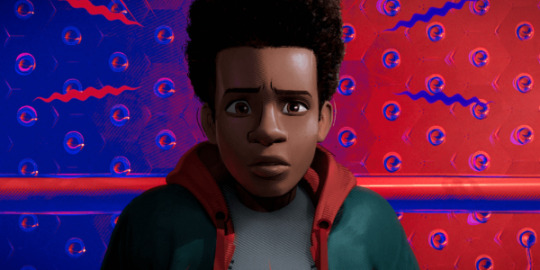
16. Spider-Man: Into the Spider-Verse dir. Robert Persichetti Jr., Peter Ramsey, Rodney Rothman
The problem with comic book movies a lot of the time is that they’re somehow too embarrassed to own their source material. Into the Spider-Verse succeeds because it emphatically embraces its roots, not only visually (the cel shading, impact lines, and even text boxes that make up the film’s look) but also narratively, by adopting the multiverse concept in earnest and milking it for comedic and dramatic effect. It’s an incredibly innovative (not to mention gorgeous) animated film that not only raises the standard but expands the scope of superhero films, giving new hope to a genre that has been stuck spinning its wheels for years. Plus, it has probably the only post-credits scene actually worth the effort, which is a very special sort of victory.

15. Museo dir. Alonso Ruizpalacios
A playful, thoughtful heist film that gets the actual heist out of the way as soon as possible. Two suburban twenty-somethings pull off a daring robbery of Mayan artifacts from the National Museum of Anthropology in Mexico City, then set off on an ill-fated roadtrip to fence the goods. There’s a certain magic to this film, in its approach that is at once totally reverent and mythologizing but also eager to take the piss out of everything (the recurring motif of Revueltas’ The Night of the Mayas suite does both), and in how it turns this story into something of a love letter to the history and geography of Mexico. Very mature, well-balanced filmmaking in Ruizpalacios’ second feature.
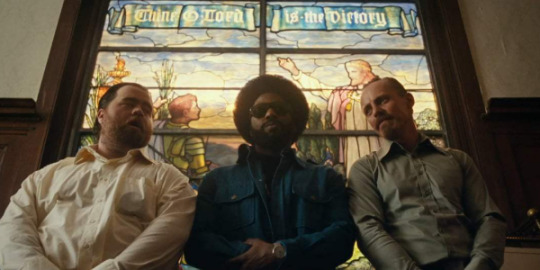
14. BlacKkKlansman dir. Spike Lee
The best Spike Lee joint in a long, long time. It taps into the freewheeling, confrontational energy of his best work, but almost as a career victory lap as he makes a game out of outfoxing Klan members. There’s plenty of humor and tension here, with a great, dry leading duo in John David Washington and Adam Driver, and a funny turn from Topher Grace (!) as David Duke. Even if it does play it a bit safe with an easy target and wraps up a bit too easily (a quick flash-forward to Charlottesville as a postscript notwithstanding), it should be fine, I think, for a film to indulge in the simple pleasure of overcoming obvious villains in a glorious fashion. For all the recent films that give nuanced and serious takes on racism in America, one ought to be about the joy of blowing up the KKK.
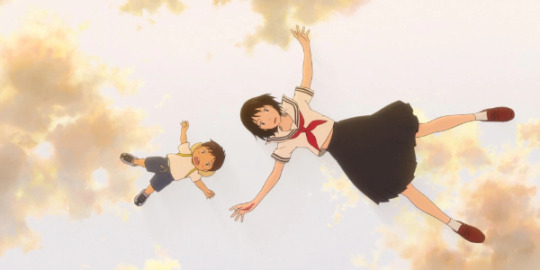
13. Mirai dir. Mamoru Hosoda
Since he’s started making original features, Hosoda has been taken with relatively high-concept storylines, from his “debut” The Girl Who Leapt Through Time to Wolf Children, but Mirai is certainly his most ambitious yet. Nearly every choice about the film is a bit weird: from the unusual, compact layout of Kun’s home to Kun’s very believable, nearly alienating (to an older audience) childish behavior to the simply bizarre logistics and metaphysics of Kun’s fantastic adventures. The time- and space-travel antics Kun and Mirai get up to never seem entirely literal or entirely imagined, somewhere between childish fable and psychological sci-fi, a mixture that culminates in a surprisingly existential climax for an unabashed children’s film. After the quite safe The Boy and the Beast, it’s exciting to see Hosoda branch out into such a complicated and strange project, certainly the most daring animated feature of the year.
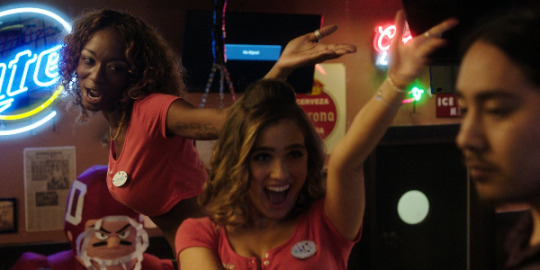
12. Support the Girls dir. Andrew Bujalski
A bubbly, sensitive, and lightly anarchic workplace comedy in that most essential of American institutions: the Hooters-flavored sports bar off the highway. Bujalski continues to prove himself an observant and funny writer, putting together a fascinating ensemble of characters brought to life by a perfectly-cast ensemble (Regina Hall is flawless as advertised, and Haley Lu Richardson brings us one of the most adorable characters in cinema). I don’t think I’ve seen a more charming film about workers’ solidarity and the lively communities that find their niche in liminal spaces.

11. First Reformed dir. Paul Schrader
Edgy priests are in a certain way low-hanging fruit; the tension is automatic, the contradiction inherently compelling. It’s a lazy symbol that can be milked for cheap profundity when employed, if you will, in bad faith. That’s why it’s so important that First Reformed, for all of its alcoholic, violent, libidinous angst packed into Ethan Hawke’s (masterfully interpreted) character, is also a great, genuine film about faith besides. It’s a Revelations film if I’ve ever seen one, about facing down the apocalypse with no way of understanding God’s plan, about living on the precipice of a collapse of belief, about accepting mystery. It’s the only film I saw this year that communicated actual dread, but even then still, somehow, bizarrely hopeful.

10. Birds of Passage dir. Cristina Gallego, Ciro Guerra
Ciro Guerra (now with partner Cristina Gallego co-directing) follows up the excellent Embrace of the Serpent with another powerful portrait of an indigenous community that, under the pressure of colonial influence, gradually devours itself. In the new film, however, this takes the form of a traditional gangster film, from the humble beginnings and runaway success to the explosions of violence and crumbling of an empire. Birds of Passage shows the origins of the Colombian drug trade with the native Wayuu people (a counterpoint, Gallego explains, to the much-celebrated Pablo Escobar narrative), and in doing so still finds room to organically and respectfully depict the traditions of the Wayuu, as well as showcase their beautiful language, which makes up much of the film’s dialogue. Best film in the genre since at least Carlos.
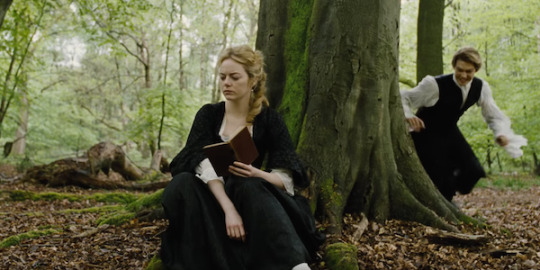
09. The Favourite dir. Yorgos Lanthimos
Though I really admire Dogtooth, I’ve found myself increasingly disappointed in Lanthimos’ output since that film. Alps was fine but clearly minor; The Lobster started strong but fizzled out; Killing of a Sacred Deer was ultimately too self-consciously bizarre. With The Favourite, we’re finally back in exciting, unsettlingly weird territory, Yorgos having found that his very mannered style of English dialogue works superbly in a costume drama context. He also gets great, uncharacteristically emotive performances (compared to, say, the last two Colin Farrell outings) out of his central trio of Olivia Colman, Rachel Weisz, and Emma Stone, with especially great work coming from Stone, who I think has discovered that all of her best roles take full advantage of the fact that she looks like a cartoon character. It’s wonderfully perverse, incredibly funny stuff, with one of the great, inexplicable endings of the year - fair to call it a Buñuel revival.

08. Bisbee ‘17 dir. Robert Greene
A documentary that tackles a shocking forgotten chapter in American labor history - a group of strikers deported from their mining town and left for dead in the desert - as well as the potential of historical reenactment to act as communal therapy. Greene moves a bit sideways from his usual performance-centric subject matter to show a different kind of performance meant not to affect the audience but the performers themselves, breaking through decades of near-silence on Bisbee’s tumultuous small town history. It’s also a remarkably multi-faceted film; though it would certainly be easy to side fully with the strikers, Greene makes sure to document the perspectives of current Bisbee citizens who sympathize with or even celebrate the decision to deport, complicating the emotions and politics of the reenactment in genuinely interesting ways. A powerful, important documentary.
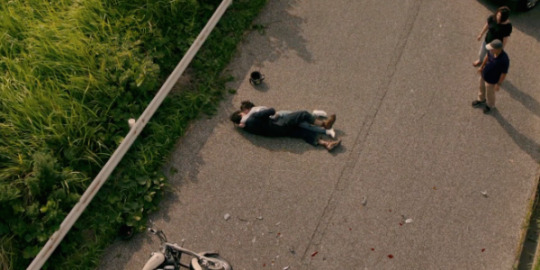
07. Asako I & II dir. Ryusuke Hamaguchi
Unwieldy and annoying English title aside (especially considering all the possible translations of Netemo Sametemo), Asako seems on the surface like nothing more than a cheap TV romance. It hits many of the same beats and adopts much of the visual style associated with this vein of visual media, particularly in the music video-esque, almost-supernatural meet-cute that opens the film. But hidden beneath these affectations is a shockingly cold un-romance, a story with an inevitable bad end that you’re tricked into thinking might not come to pass. By employing so many stylistic and even verbal cliches, Hamaguchi reveals how these internalized these storytelling devices are, and how they not only can’t prepare us for the complications of actual relationships, but even shift our expectations away from reality. It’s an absolute gut-punch of a film, covered in a seductively sweet carapace.

06. Sweet Country dir. Warwick Thornton
In a fairly large shift from his previous Samson and Delilah, Thornton has put together one of the best and most unusual Westerns in recent years. Featuring great, earthy performances from its nonprofessional cast (plus a bit of Sam Neill and Bryan Brown for good measure) and a weird, almost Malicky flash-forward structure, the film explores a not-widely-depicted history of exploitation of indigenous Australians. It’s a sad film, showing a fairly exciting lead-up to a somewhat deflating moment of unjust violence - but of course, many of the best Westerns aren’t about good triumphing, either. It’s the film on this list that most grew on me over the course of the year, having not impressed me at first but then blowing me away on a second viewing.
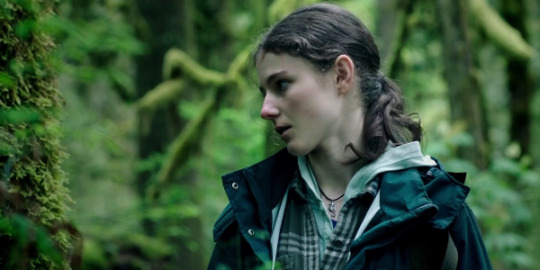
05. Leave No Trace dir. Debra Granik
For all the buzz surrounding Winter’s Bone - a film that still holds up after so many years - it’s a bit surprising that it took Granik eight years to put out a follow-up, but I guess it’s worth the wait. Unlike Bone, Leave No Trace is a kind, gentle film, leaving behind the edgy Ozarkian drama of its predecessor for a similar but more forgiving setting of woodland communities in the Pacific Northwest. It initially seduces you with Ben Foster’s outdoorsy survivalist lifestyle, cut off by seemingly uncaring state officials, but gradually revealing, through the second thoughts of his daughter (Thomasin McKenzie, in a shall we say Lawrencian turn), the downsides and flawed motivations for their lifestyle choice. It’s a quiet and thoughtful film, melancholy and optimistic in equal measure. Makes one hope Granik can get another project off the ground sooner.
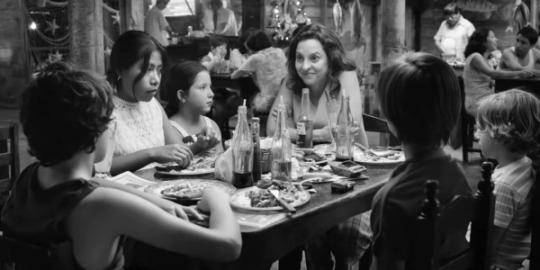
04. Roma dir. Alfonso Cuarón
I mean, what else can we say about Roma? It’s about as good as claimed, beautifully shot, framed, written, acted, whatever. It’s at its best, sort of ironically, when Cuarón breaks up the quiet personal drama for some of his characteristic action-y set pieces (a Children of Men-esque protest sequence and the climax on the beach are particularly memorable), but he also shows his talent in handling relatively uneventful family scenes, using the layout of the house to facilitate some surprisingly interesting camera movements. I’m happy that Cuarón, who could easily transition into a more boring prestige Hollywood filmmaker if he so chose, is using his industry clout to pull together neat little films like this.

03. The Old Man & the Gun dir. David Lowery
What a completely pleasant film. A film that walks a dangerous tightrope - one of nostalgia, roguish charm, and incessant aw-shucks optimism - that can easily fall into twee, navel-gazing hell, but that miraculously pulls it off, resulting in a genuinely spirit-lifting character study of an almost folkloric figure. Robert Redford’s good in this, but of course he is - that’s the whole point. Perhaps more appropriate to say that this film is good for Robert Redford, that it rises to the occasion of celebrating his career in full and pulls it off without appearing trite or disposable. As good a (reportedly) final outing as anyone could ask for.
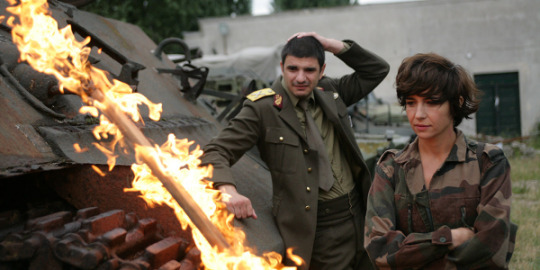
02. I Do Not Care If We Go Down in History as Barbarians dir. Radu Jude
A nearly three-hour, densely conversational, nakedly didactic examination of the historical effects and contemporary sources of fascism and ethnic nationalism that somehow flies right by. Radu Jude, a relative latecomer to Romanian cinema’s rise to international prominence, makes a strong argument for being his country’s best and most important filmmaker, taking on complicated, controversial, and infrequently discussed subject matter about Romania’s troubled past. If you can get past Barbarians’ sort of user-unfriendly exterior (Iona Iacob opens the film by introducing herself and explaining her character, which tells you the sort of thing you’re getting into), it should prove to be a remarkably stimulating and even fiendishly funny ride.
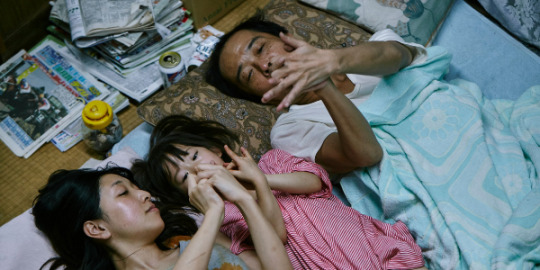
01. Shoplifters dir. Hirokazu Koreeda
If you’ve spent the ten years since Still Walking wondering what exactly Koreeda is trying to do anymore, then this is your answer. He’s spent most of the last decade pumping out the same nonconventional family drama over and over again (everything from I Wish to After the Storm, at least) so he could hone his skills like a weapon and create the perfect, ultimate version. With a pitch-perfect cast (Koreeda regulars Lily Franky and Kirin Kiki are the standouts, but Sakura Ando, Mayu Matsuoka, and the two child actors more than hold their own), and probably the perfect expression of the chosen family, spots and all, that has consumed much of Koreeda’s career, Shoplifters is one of its director’s career-best films, showcasing all of his talent for depicting delicate, intimate moments and bringing smart, complex ideas to seemingly straightforward premises. The most exciting Palme d’Or winner in years and easily the best film of 2018.
#film#best of 2018#shoplifters#roma#the old man and the gun#leave no trace#i do not care if we go down in history as barbarians#birds of passage#the favourite#sweet country#bisbee 17#asako i & ii#support the girls#mirai#first reformed#museo#blackkklansman#the green fog#sorry to bother you#spiderman into the spiderverse#minding the gap#the miseducation of cameron post#liz and the blue bird#make me up#sew the winter to my skin#good manners#mom and dad#an elephant sitting still#ready player one#unsane
4 notes
·
View notes
Photo

Thoughts on Apple TV+ and the Start of TV’s Great Streaming Wars: A Global Contest for the World’s Attention Span
In the end, it looked an awful lot like a typical, network TV upfront session.
Loads of stars took the stage at Apple’s Steve Jobs Theater in California Monday, to uncomfortably testify about how excited and gratified they were to be cranking out new shows for the company’s muscular foray into original scripted video programming, a streaming service called Apple TV +.
The names, indeed, were legendary: Steven Spielberg touting a new iteration of his anthology series Amazing Stories; J.J. Abrams promoting a series on the life of a young, female singer songwriter developed with singer-songwriter Sara Bareilles; Jennifer Anniston and Reese Witherspoon co-starring with Steve Carell in a series about morning television called The Morning Show; Jason Momoa and Alfre Woodard in a series about an Earth where all humans are blind; and the Queen of All Media, Oprah Winfrey, who will offer a few documentaries and will host a book club she called “the biggest, the most vibrant, the most stimulating book club on the planet.” Apple stores will stream her conversations with authors across all devices.
It was a presentation long on celebrity and glamour, short on details. The new TV shows didn’t have logos, trailers or, sometimes, completely understandable concepts. The stars assured they would be revolutionary, inclusive, high quality and impactful. But, as is usual with such things, the creators and stars sometimes weren’t great at describing exactly what these shows will be.
This was a strategy that defies conventional TV logic. Throughout the recent history of scripted television, it has taken producers executives and stars a little while to figure out what works on new platforms. Winfrey needed two years or more to figure out what her cable channel, OWN, could offer that was profitable and desired by viewers; even Netflix created the oddball crime dramedy Lillyhammer before House of Cards or Orange is the New Black.
So to see Apple step up with a billion-dollar-plus checkbook to hire such famous names BEFORE anyone in the public has seen much of their TV programming sounded, well, risky. Because, no matter how good these shows look on paper, most of them are bound to fail, given the laws of TV success.

(Apple TV talent, including: seated L to R, Ron Cephas Jones, Rob McElhenney, Brooklynn Prince, Michelle Dockery, Reese Witherspoon, Oprah Winfrey, J.J. Abrams, Jennifer Garner and Josh Gad.
Standing (L to R): Brian Grazer, Jane Krakowski, Ewan McGregor, Jada Pinkett Smith, Joel Kinnaman, M. Night Shyamalan, Chris Evans, Brie Larson, Jennifer Aniston, Jason Momoa, Tim Cook, Hailee Steinfeld, Octavia Spencer, Jon M. Chu, Alfre Woodard, Rashida Jones, Kumail Nanjiani, Aaron Paul, Emily V. Gordon, Tim Robbins, Sara Bareilles, Aly Raisman and Leslie Odom, Jr.)
That’s why it was so important to note that Apple has a different goal in mind with its TV shows. The programs are the glitzy enticement to pull users into an ecology of Apple technology products and services. It’s a war for the globe’s attention span. That’s likely why the announcement of the original TV shows came at the end of a long presentation that included an Apple News + subscription service, a credit card linked through its Apple Wallet dubbed the Apple Card; a gaming subscription service called Apple Arcade and am amped up TV app that includes Apple TV Channels and Apple TV +.
Apple is creating a ton of impactful-sounding shows to compete with the Disney+ streaming service, which is also supposed to debut this fall – about same time as Apple TV + (can’t these corporate types come up with more distinctive product names?) And it has a powerful delivery system: a mobile computing device that many consumers already take with them everywhere, already a trusted part of their media ecology and a place where so much of their attention is focused.
Other than the $9.99 per month charge for Apple News +, there was no information on the cost for this stuff – which is likely the biggest unknown variable, especially for the TV streaming service. Executives promised consumers would “only pay for what you want” in Apple TV Channels, but so far the lineup of existing channels available over the streaming service ranges widely from HBO, Showtime and Starz to CBS All Access, Epix and the Lifetime Movie Club. So with a roster like that, maybe it’s a little easier to offer a la carte programming – basically the ability to select each individual TV channel in your subscriber package, in a way cable customers have requested for decades.

Apple didn’t even show logos for most of the original TV series announced Monday. At the May TV upfronts, where broadcast networks reveal their fall lineups, at least you can see a written synopsis of the show and 5-7 minute trailer. Apple just had bits of uncomfortable scripted banter with producers and co-host and a sizzle reel at the end that looked so good, I wish they had shown it before all the talking about TV began.
This all raises an important point that many of us who watch the TV industry have been speculating about for years. One of the biggest unknowns in the modern streaming era is the question of how – or whether – a TV provider values the television shows it is creating.
In the old days, the calculation was simple. Big ratings lead to big advertising dollars, which lead to big profits. Occasionally, you’d have a show that was of such high quality, its critical acclaim or awards would outweigh its ratings. But that too, was easy to discern. And everyone from actors to producers and executives could react based on that success or lack of it.
Now, in a world where streamers like Amazon, Netflix, Hulu and Apple don’t reveal how many people watch their shows – not even to those who make them – it’s tougher to gauge success. Beyond that, companies producing TV now have priorities beyond simple viewership numbers. Amazon’s original programming helps sell its Amazon Prime subscriptions; Apple TV+ shows are expected to boost interest in subscriptions, and perhaps purchase of an Apple TV streaming device or other Apple products.
So who knows how Apple will judge the success of its new shows, or how that will change the balance of power in Hollywood? It could lead to greater freedom, as producers no longer have to court big viewership numbers. But it also leaves the industry vulnerable to a bubble bursting, if Silicon Valley ever decides to stop playing in Hollywood’s sandbox. And what happens if/when the arbiter of success moves from the will of the viewer to the will of a CEO?
These questions will only intensify, as the streaming wars heat up and big players like Disney and WarnerMedia enter the fray with their own streaming services later this year and early next, bringing more original shows governed by each company’s definition of success.
There is a growing sense that, in these mega streaming/media services, Hollywood and Silicon Valley are creating something, like Facebook and Google, whose full impact will only be understood many years later.
Buckle up. It’s going to be one hell of a ride.
0 notes
Text
Wild Card Weekend: A Look at Chicago’s Offense
Let’s get it back to the Eagles.
We’ve got a playoff game to talk about, and it looks good on paper.
This is a Chicago team that hasn’t been to the postseason in eight years. The quarterback has never played in a playoff game and Matt Nagy is a first-year head coach who is entering relatively unfamiliar territory, at least in his current role. The Bears play host to an experienced and battle-tested Philly team on a three-game winning streak that thrives in the underdog role. All of the intangible stuff surrounding this game seems to favor the Eagles, who should feel little to no pressure on Sunday afternoon.
But they don’t play the games on paper, so here’s a short scoop on the Chicago offense.
Numbers
I like to start it off with a general overview of how the opponent performed statistically.
Here are Da Bears regular season marks:
21st in total offense (343 yards per game)
21st in passing offense (222 YPG)
11th in rushing offense (121 YPG)
9th in points per game (23)
11th in 3rd down conversion rate (41%)
11th in 4th down conversion rate (60% on a 9-15 mark)
8th best in penalties committed (just 97 total, six per game)
16th in first downs (331 total, 20.6 per game)
27th in rush yards per attempt (4.1)
tied for 7th in rushing touchdowns (16)
12th in passing touchdowns (28)
14 interceptions thrown (12th most in NFL)
9 fumbles lost (4th most)
36 takeaways (#1), 24 giveaways (#8) for a +12 turnover margin
average time of possession 31:59 (3rd, just behind Eagles)
Those are their league-wide totals. You see they aren’t an amazing passing team, but they do a really nice job of controlling the clock and moving the chains with a rushing offense that finished just outside of the top-ten. They really are similar to the Eagles in the way they limit penalties and win in auxiliary areas of the game, though that positive turnover margin is much more about their defense and not their offense. They’ve coughed the ball up rather frequently this season.
Here are their individual numbers on the season, after the jump:
Nothing amazing from Trubisky in the passing game. He was middle of the road in just about every single category this year.
Howard had a nice season running the ball, but that 3.7 yards per attempt number was very low for a 1st choice RB, ranked all the way down at 39th in the NFL next to guys like Peyton Barber and Alfred Morris. Tarik Cohen fared better in that category, but you may recall the Eagles absolutely demolished Chicago in the running game last season, holding the duo to nine carries for -5 yards. It was an absurd performance by the defensive line, and Trubisky, who does a lot of good things with his feet, only carried it four times for 12 yards at Lincoln Financial Field as a rookie.
He’s not Lamar Jackson, but he did finish sixth in rushing yards among NFL quarterbacks this season, which is a key to their success in moving the chains.
Here are the receiver stats:
The receiving corps is solid but nothing to write home about. There’s nobody out there who really makes you say, “oh shit, who’s gonna cover that guy?” There’s no fantasy football stud. Gabriel was an Atlanta castoff who can stretch the field a bit. Allen Robinson did a decent job this season coming off a 2017 ACL tear. Trey Burton had some nice moments as well, but what Chicago does best in the passing game is kill teams out of the backfield with Cohen, who does a lot of moving around in various formations.
It’s on the Eagles defense to limit him and limit Howard and force Trubisky to pass his way to victory. Both teams are pretty similar in the way they control the clock and limit opponents via stout run defense, so I think if the Eagles put the game on Trubisky’s shoulders, then they’re going to be in good shape.
Clips and quotes and stuff
By know you know that Nagy comes from the Andy Reid coaching tree. He spent a brief amount of time in Philadelphia as an intern, assistant, and then a quality control guy on the offensive side of the ball. He followed Andy to Kansas City and he incorporates some of those concepts into what Chicago does now.
Jim Schwartz was asked about that this week, the idea that the Bears do some similar things in the offensive game:
“It’s different when it comes to what his players are, all the different things that are going on in the NFL. I think that’s a sign of good coaching. I think that’s probably No. 1. But I do think that even though you’re seeing a completely different scheme, you’re seeing some core things — I don’t know another way to put it.
Still efficient running the ball, and a short passing game was still very important to them. I think those things carry over. They might do it a completely different way. Nobody was running zone read in 1999 (Andy Reid’s first year). Everybody was running true west coast things, but the principles of run the ball still, control the game with the run, they do a very good job of that.
High percentage passing game. Might look a little bit different, but there are different ways that they do it.”
And then a follow-up question about Andy always having a smaller guy, a scat back or good pass-catching tailback like Brian Westbrook or Tyreek Hill, guys who are similar to Tarik Cohen:
Schwartz:
“I don’t know that he was using them as wide receivers back then. But, yeah, for sure. It’s just a different way to do a lot of the same things. No matter how far you go to all the different ways offenses are working right now, running the ball still works. Running the ball is still important. Short passing game, high percentage, keeping the sticks moving, is still important. Making big plays, still important. Mobility of a quarterback, still important.
All these things carry over. It’s packaged up a little different, it looks a little bit different, but those core principles stay the same.”
A couple of clips chained together here to show those concepts –
In the first play, you’ll see some pre-snap motion to get Cohen free in the flat. In the second play, they get some lost yards back with a short completion to Howard. On the third play, Trubisky moves the chains with his feet:
LA does a really nice job on those first two plays, but you see how Trubisky has a good feel for when to step up in the pocket and just take off running. He’s got a good internal clock, a good sense of when pressure is coming.
Here’s Schwartz on Trubisky’s running ability:
First of all, it’s part of the run game, so I think that’s the No. 1 part. He’s certainly capable of pulling the ball and running for yards and first downs and things like that. It just adds another dynamic to the passing game.
We’ve seen it from so many different quarterbacks. If it’s not there, he can create and start a new play. He can also make a big play down the field. I think we saw that a little bit from him last year. I know in that game we were having a really good run defense game in that game, and he had a scramble late in that game that sort of took them out of the negative yards.
So we saw him move around a bunch. That’s part of what they do, and it’s been working for them. We’re going to have to do a good job keeping him contained, reading our keys, making sure we’re playing responsibility when it comes to the zone read and the RPOs and those things because if you don’t, he’s a guy that can make you look bad.
There are also a lot of instances where Trubisky is willing to throw short and take what the defense gives him.
On a play like this, they’ll run just a little bit of pre-snap motion, pull Cohen in, then roll him back out on a short route. Richard Sherman is willing to give up the underneath yards to prevent a deep toss instead:
That’s not dissimilar from the wheel route or that little out that the Eagles use successfully with Darren Sproles. In this case, San Francisco was willing to concede the short pass on 2nd and 4.
Schwartz with more on Chicago’s penchant for moving guys around at the line of scrimmage:
People use motion a lot of different ways. They use motion to ID defenses. They use motion to put stress on defenses from like having to cover a guy when he’s running as fast as he can away from you. They use those kind of motions to make you have to communicate, make guys have to change responsibilities across the way.
….
It’s nothing we haven’t seen from half a dozen teams this year. They’re not doing anything unique. They just have really good players doing it and they do a nice job in their scheme of putting you in positions that you have to communicate, and you also have to watch your keys. You can’t get distracted by other things.
More or less.
Chicago has a different coaching staff this year, so even though a lot of the personnel is similar, the scheme is not, and you weren’t getting as much of the Kansas City and LA Rams influence when the Bears played at Lincoln Financial Field in 2017. Schwartz described their offense as a “melting pot” and referred to Trubisky as a “point guard” type of quarterback who successfully navigates zone reads, various RPO looks, and those quick slants and hitches and speed-outs. You’ll also see jet sweeps and end-arounds from guys like Gabriel and rookie Anthony Miller, who leads the team with 7 receiving touchdowns but dislocated his left shoulder in week 17 and will not be 100% healthy if he’s on the field Sunday. Gabriel is also dealing with bruised ribs.
That’s about it. Chicago’s overall success this season can be credited to their incredibly stout defense, but the offense does some nice things and has a couple of tricky playmakers that need to be accounted for.
The Eagles win if they:
stuff Jordan Howard in the run game
limit third down scrambles and chunk yardage ground pickups for Trubisky
keep Cohen in front of them, communicate, and stay disciplined with pre-snap motion and some quirky receiver-involved plays
Mitch Trubisky is a second-year quarterback heading into his first playoff game. I don’t think he wins the game if he’s forced to throw his way to victory, so the game plan here should be relatively straightforward. This should be a very low-scoring game, maybe 13-10 or 17-14, something in that range.
The post Wild Card Weekend: A Look at Chicago’s Offense appeared first on Crossing Broad.
Wild Card Weekend: A Look at Chicago’s Offense published first on https://footballhighlightseurope.tumblr.com/
0 notes